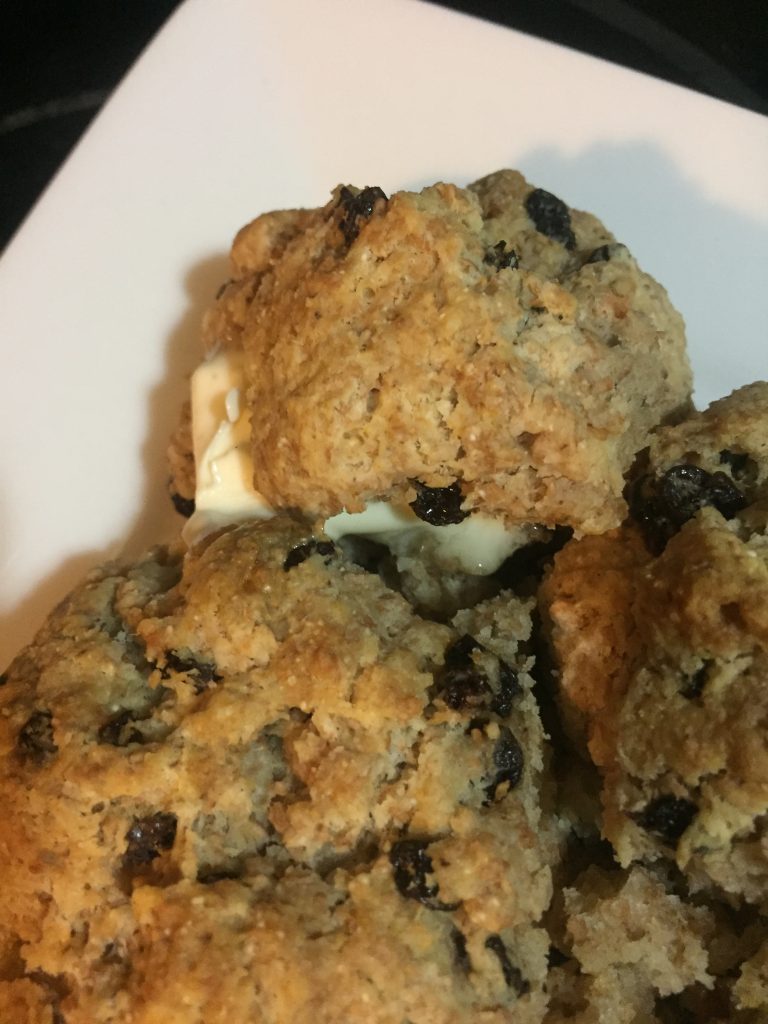
I’ve lost track of the number of times I’ve made biscuits. They were one of the first things I learned to cook with my mom and have been a staple of my diet for much of my adult life. You can serve them with soup. You can eat them for breakfast. You can add sugar and have shortcake (see “Additional Notes,” below), or add scrambled eggs and have a low-key dinner. Over the years, I’ve made biscuits with water, milk, cream, yogurt, buttermilk, almond milk, and half-and-half. I’ve tried cake flour, spelt flour, wheat flour, almond flour, buckwheat flour, and all-purpose. I’ve added currants, craisins, raisins, and dried blueberries; I’ve cooked them at temperatures ranging from 325º to 425º. Sometimes they turn out great; others aren’t as successful. But they are always edible, always easy, and almost always an option, because most of the ingredients are pantry staples. So if you try this formula and don’t like your results, make some changes and try again. Don’t buy into the notion that baking is a science and you have to be perfect; instead, use this formula as an opportunity to grow more comfortable with flour.
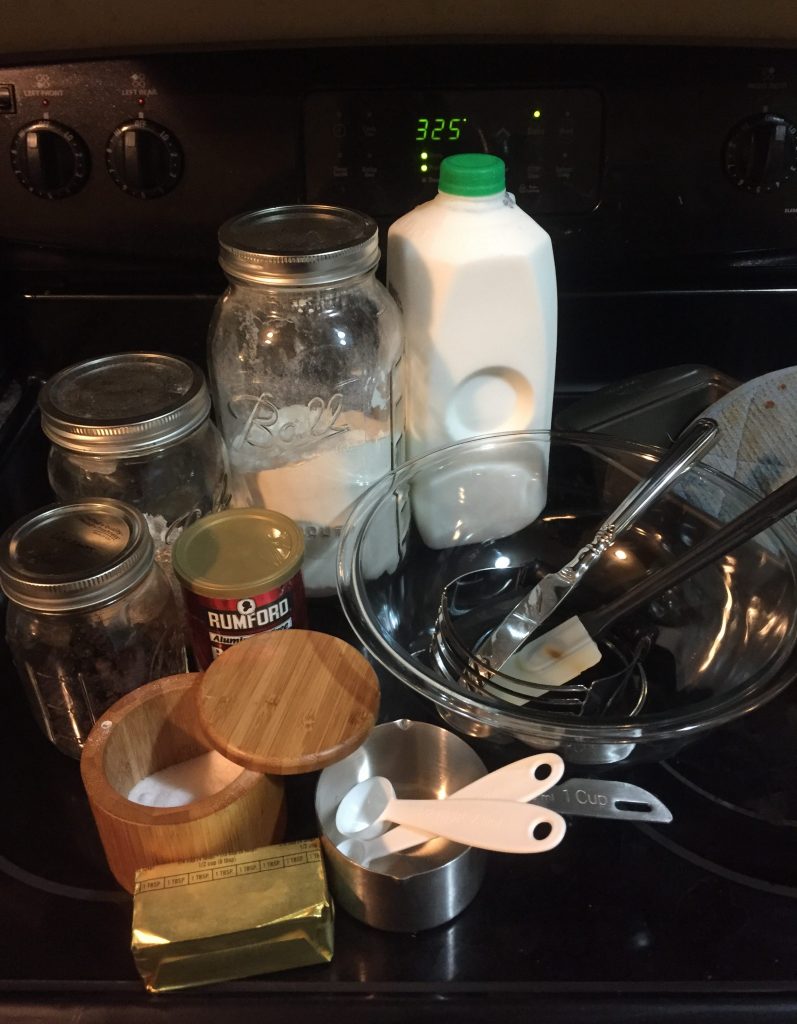
Basic Formula
Flour + Leavening Agent + Salt + Cold Fat + Liquid = Biscuits
[The most basic version of these biscuits includes all-purpose flour, baking powder, butter, and water. In this version, I used equal parts all-purpose and spelt flour (which is an ingredient I’m still learning to cook with), baking powder, vegan butter (an ingredient I’ll probably stop learning to cook with, at least when making biscuits), and buttermilk. I also added currants to lend some sweetness. If you’re making biscuits for the first time, I recommend you use all-purpose flour, baking powder, milk, and three tablespoons of butter per cup of flour.]
Oven
Large mixing bowl
Measuring cup/spoons (you will need a 1-cup measure plus teaspoon and tablespoon measures)
Rubber spatula (or mixing spoon)
Pastry blender (or fork if no pastry blender)
Butter knife
Ovenproof pan (glass or nonstick)
Oven mitt
Basic Steps
1. Preheat oven to 325ºF. If you’re in a hurry, you can cook the biscuits at a higher temperature (don’t go above 425º). They will burn more easily, though, and may be undercooked in the middle. If you like chewier biscuits, this is the way to go; try 375º or 400º and see how you like the results.
2. Add dry ingredients to mixing bowl and stir to combine. Use the following ratio, doubling all amounts if serving more than one person:
1 cup flour : 1/2 tablespoon baking soda : somewhere between 1/4 and 1/2 teaspoon salt
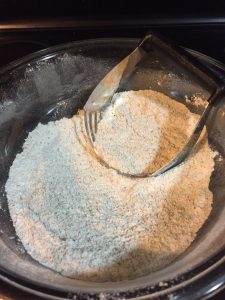
3. Blend cold fat into flour mixture. Use 2-3 tablespoons of fat per cup of flour and smoosh it into the flour using your pastry blender or fork. The point of blending is to break up the fat so it distributes throughout the dough and gets coated with flour; but you aren’t going for a homogeneous mix. You want to leave some larger crumbles because these will melt during baking and create flakiness. If your largest pieces of butter after blending are about the size of peas, you’re all set.
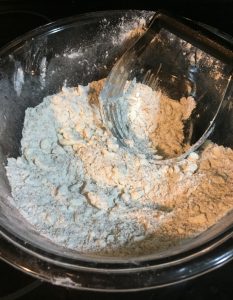
4. [Optional] Add dried fruit. Bear in mind that too many raisins/currants/blueberries/cranberries/etc. will prevent the dough from rolling into a ball. I’ve included a shot of my bowl so you can see the ratio I used.
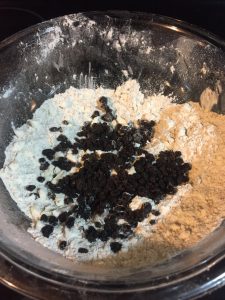
5. Add liquid and stir until it is incorporated. You will most likely need slightly less than a half cup of liquid per cup of flour, but the actual amount will depend on the type of flour you’re using, the type of liquid you’re using, and how well one absorbs the other.
6. Adjust quantities of flour and liquid. You’ll know right away if you need more liquid because some of your dough will have clumped together and the rest will be sitting in crumbles at the bottom of the bowl. If you aren’t sure, grab a fistful of dough and see if you can mold it into a ball between your palms. If it falls apart, you need more liquid. On the other hand, if your dough is too wet, it will look spongy and will cling to your spoon in large quantities. Add a dusting of flour and stir until the flour is all mixed in. You’re looking for the point when the dough naturally comes away from the sides of the bowl in a large, smooth ball.
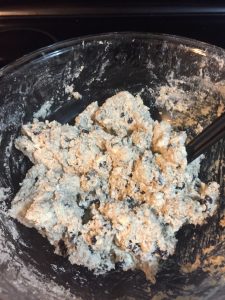
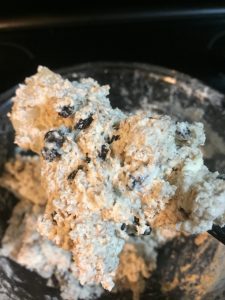
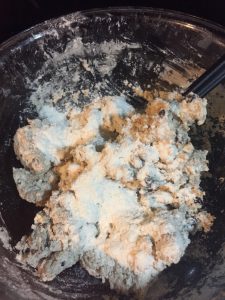
As you can see in these pictures, my dough was too wet at first. The enlarged photo below is what you’re going for.
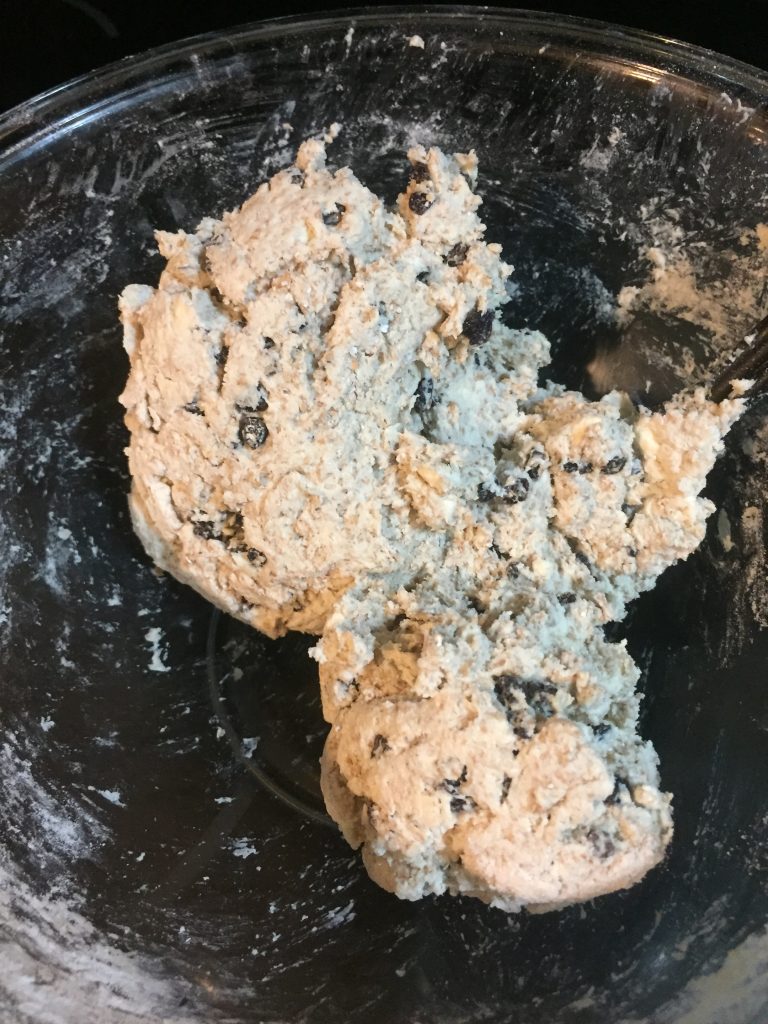
7. Shape dough into balls and place in pan. The biscuits will fluff as they cook, so I usually go with biscuits that are slightly smaller than my cupped hand when raw. You can fit them snugly into the pan. It’s also okay if they don’t fill the entire thing.
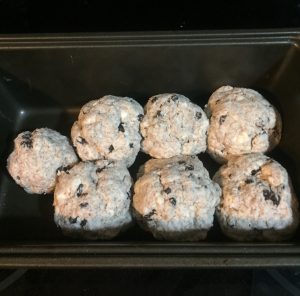
8. [Optional] Dust cinnamon and sugar across the tops of the biscuits.
8. Put biscuits in oven and bake until you can smell them. The tops should be golden and they should feel firm when tapped.
9. Serve hot with butter, honey, jam, or whatever else. These reheat well in a toaster oven set to 250º.
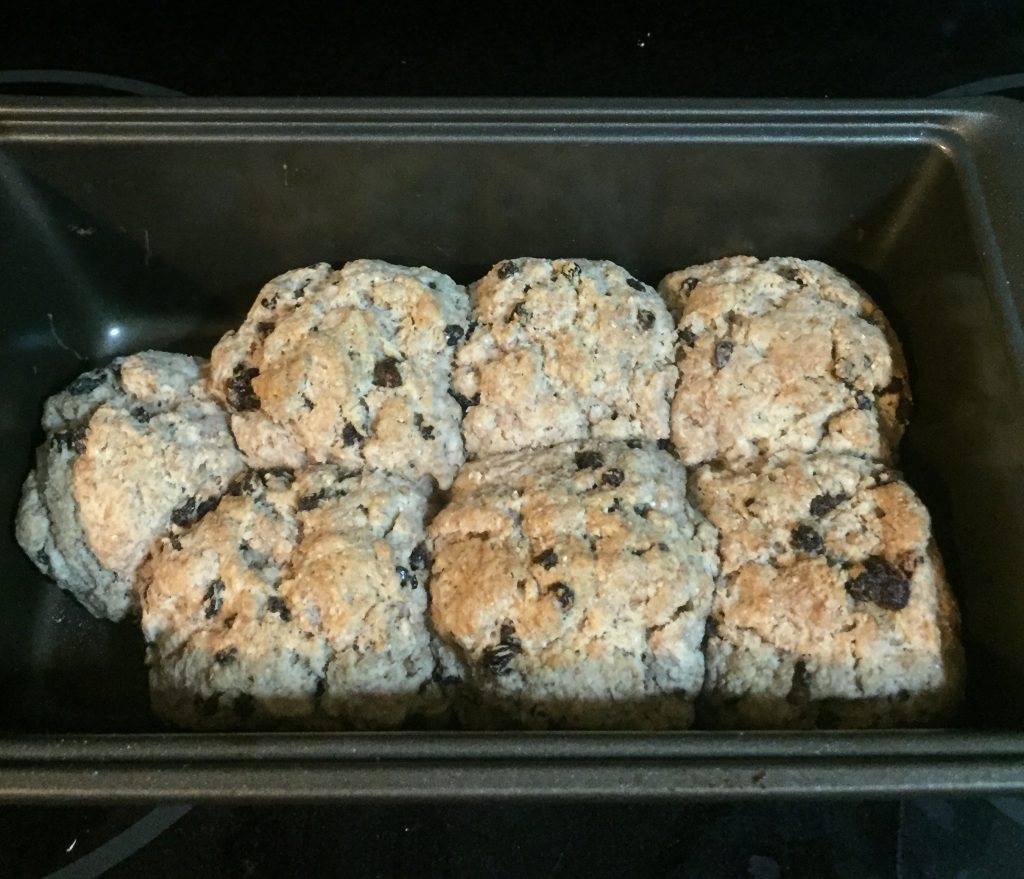
Additional Notes: Serving guests and need a quick option for dessert? Add the same amount of sugar as baking powder and make your dough with all-purpose flour and cream. You can then serve the final product with fruit and whipped cream and have shortcake.


